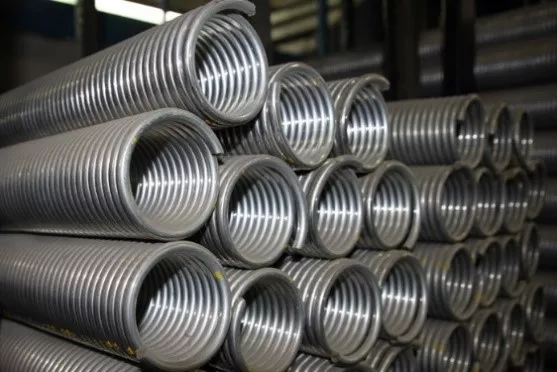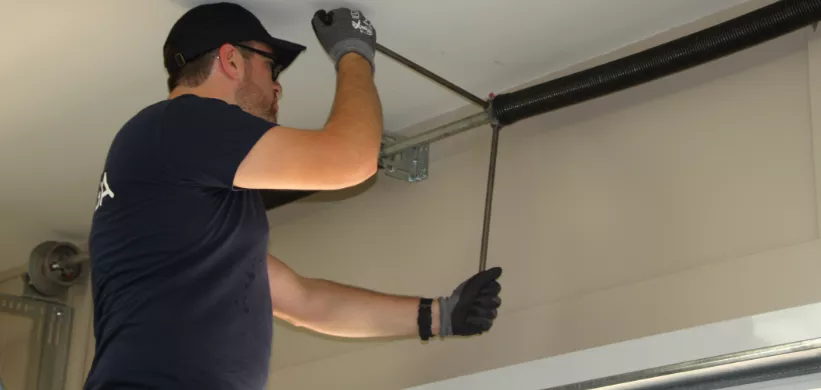Most of the time, people do not think much about torsion springs unless they are directly involved in a line of work using them regularly. Most people also do not think about the inner workings of their garage door. They do not think about the door until there is something wrong with it. Funnily enough, the torsion springs are an essential part of the garage door system. The spring system ensures a properly counterbalanced door, which means you will be able to easily open it manually and without the use of a garage door opener.
Since the spring system is such a vital part of the garage door system, you should have at least a basic understanding of what it does and how it works.

Understand the Basics First
One of the first things to understand when it comes to sectional overhead garage doors is that there are two types of springs. These springs are extension springs and torsion springs. The extension springs install over horizontal tracks, and torsion springs are over the head of the garage door. The torsion springs are the most popular and the most widely used for several reasons.
For starters, you will be happy to know that the garage doors that use the torsion springs tend to be quieter because they are over the door and don’t use horizontal tracks. It means less transmission of noise, thus the more silent operation. The operation of the garage door tends to be smoother, as well.
Another one of the benefits is that the torsion springs tend to be safe. The spring is inside of a shaft, and if the spring were to break, it would still stay inside of the shaft. If extension springs do not have an added safety cable, and they were to break, it could cause severe damage to the door, wall, and vehicle. It could also hurt anyone who is in the garage at the time.
Torsion springs are for more than just garage doors, of course. Shaped into a coil, and working through torsion, they store mechanical energy. And this ensures that the garage door will be able to open either manually or with the garage door opener.
Many Important Parts in the System
The torsion spring system does not operate on its own, of course. It works as a part of other systems in the garage door. Inserted into the shaft, and held in place by the central plate, it mounts to the wall. The shaft connects to a grooved drum, which has the lifting cable wrapped around it. The cable is attached to the door’s bottom via a bracket. It all comes together to work together – bottom bracket + lifting cable + drum + shaft + spring. The door’s weight is transferred to the spring when closed. The spring relaxes when it is in the open position.
The garage door is more substantial than many people realize. It might not seem too heavy when the opener is working, and when it is balanced correctly, but these doors are essentially walls, and they can be quite heavy.
If a door is 1 ¾” thick steel door insulated with polyurethane foam, you are looking at about 2 lb. for each square foot. If there are windows, the weight will increase further. Therefore, a door that is 9’ x 7’ might weight between 150 lb. - 160 lb. (68 kg to 73 kg). If this door is 16’ x 7’, the weight could be between 280 lb. - 295 lb. (127 kg to 135 kg).
If it is a non‑insulated 2” thick steel door, it would be about 1 ½ lb. per square foot. It would be 125 lb. - 130 lb. (57 kg to 59 kg) for a 9’ x 7’ door. It would be 225 lb. - 235 lb. (102 kg to 107 kg) for a 16’ x 7’ door.
Frequent Questions
Check out these questions and answers that come up often when learning more about torsion springs.
-
When viewed from the inside, is a spring for a single door always on the left?
The answer to this question is no. The manufacturers will offer springs for the right side, as well. The side on which the spring is located does not matter.
-
Do you need one or two springs?
Most of the time, a single door that is 9’ x 7’ will only need to have one spring. If it is a double door, 16’ x 7’, you will need to have two torsion springs.
-
How long does a spring last?
Springs are generally rated for 10,000 cycles. Each cycle is one opening and one closing. Those who use their garage door a couple of times a day could have it last for seven years or so. Some manufacturers have springs rated for 20,000 cycles and more.
-
How can you extend the life of a spring?
Garage door springs are made with zinc, which comprises about 35‑40 percent of the metal in the spring. This can help protect against rust, but there are also better rust‑resistant springs out there for extremely damp garages.
-
How can I make my springs last longer?
An excellent way to protect the springs and to make sure that they last for as long as possible is to ensure regular lubricating of the metal parts that come into contact with one another. And that includes not just the spring, but the other parts of the door that touch like the hinges and the rollers. Always use a petroleum‑based lubricant.
-
Are the springs galvanized?
Most of the time, springs will be galvanized, which will help to prevent rust. For those who have humid garages, it might be a good idea to consider fully galvanized torsion springs rather than partially galvanized.
-
Is the torsion spring always placed in the front?
While the spring is often placed in the front, it could be placed in the rear if there is less than 12” of headroom over the door. In those cases, it will be mounted in the back, and it will require double horizontal tracks.
You can deactivate your garage door opener and try to lift the door by hand. It should feel as though it weighs less than 10 lb. (5 kg). If you are straining to open the door, there is a problem with the system.
Don’t Make Dangerous Choices
If you have a broken or damaged torsion spring, you should never try to repair it on your own. If you live in, Lewiston or Brunswick, you will want to let the experts take care of you. Call 1‑800‑244‑9253 to get in touch. We understand garage doors and can work with and repair these parts and more. We can also provide you with a quotation by email.









Add new comment